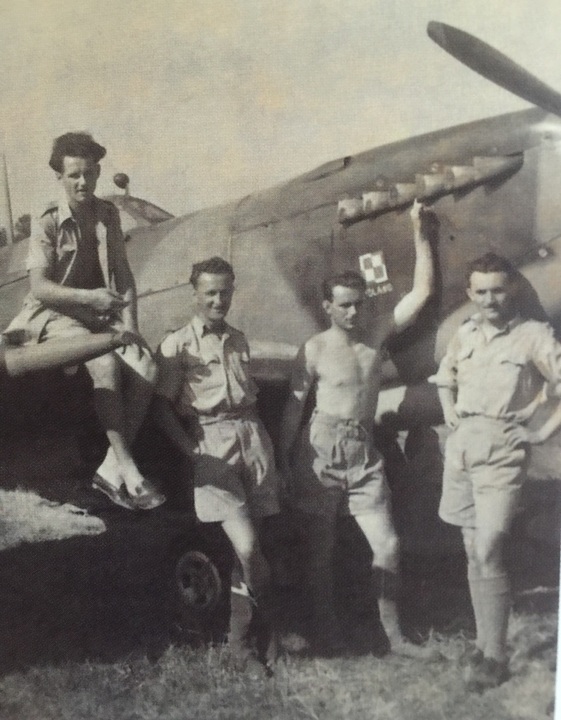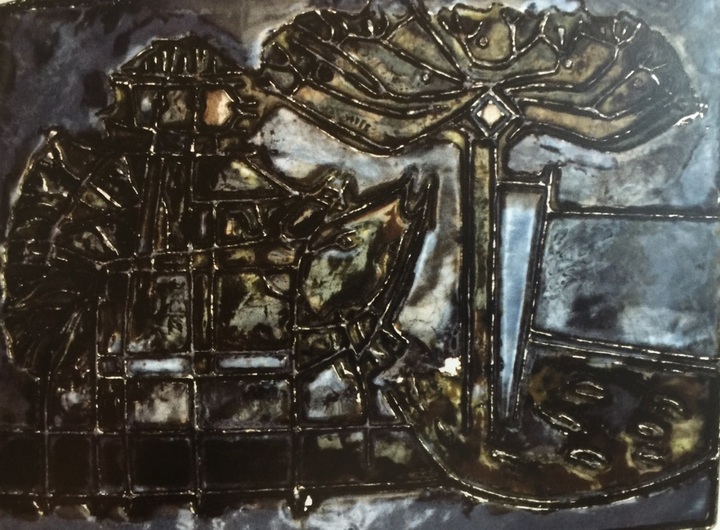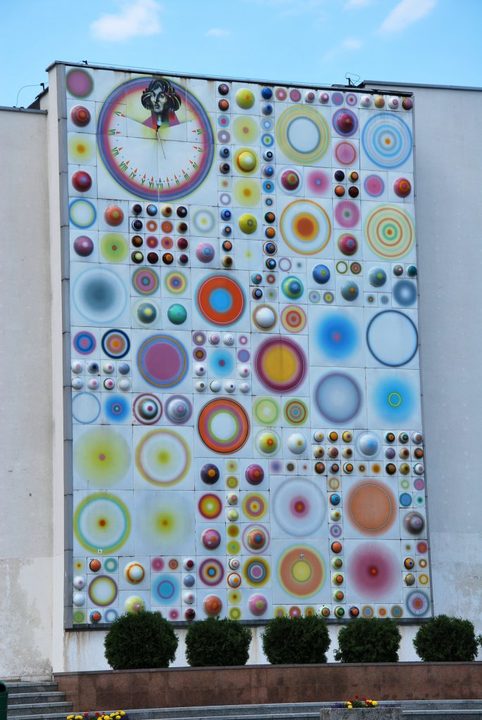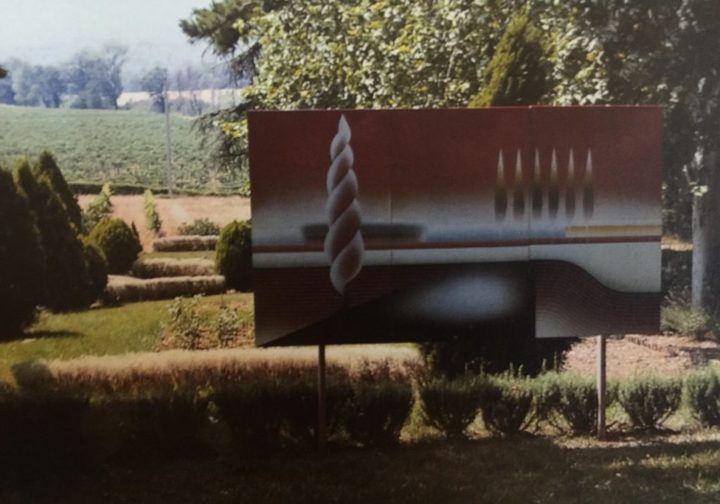
This blog is designed to acquaint readers with the work of enamellists who are working in fine art, that is, representational and abstract images designed to deliver a specific message or emotional tone , as opposed to decorative art.
Stefan Knapp
Stefan Knapp was an enamelist who led an adventurous life. His enamels could reach incredible sizes, and he developed unique enameling techniques to allow him to make such large enamels.
Knapp was a young man in Poland when the second World War broke out. He was an officer in the Polish military and was captured by the Soviets and placed in a concentration camp. When Germany attacked the Soviet Union, Knapp was allowed to leave and make his way through Asia to British territory. He became a fighter pilot in the Royal Air Force and flew the legendary Spitfire. He was impressed with the sight of agricultural fields whizzing by under his Spitfire. These images later became the themes for some of his abstract enamels.

Stefan Knapp sitting on the wing of a RAF Spitfire during World War II. (Picture credit to Cathy Knapp’s “Stefan Knapp: A Visionary Artist Who Worked in Enamel&rdquo![]()
After his war service, Knapp remained in England and became an artist. His experimentation included glass-on-metal art. He liked the results.

Pilgrimage. Enamel on copper. 1956 (24 in x 32 in). Example of early Knapp work. (Picture credit to Cathy Knapp’s “Stefan Knapp: A Visionary Artist Who Worked in Enamel”.)

Large mosaic on display at Nicolaus Copernicus University in Toruń, Poland. Enamel on steel. 1972. 1,600 square ft.

Lavandou Landscape. 3 piece enamel on steel mural. 1980. 6ft x 8 ft. ( Picture credit to Cathy Knapp’s “Stefan Knapp: A Visionary Artist Who Worked in Enamel”.)
In 1960, Knapp was commissioned by George Farkas to do an abstract enamel covering the entire wall of an Alexander’s Department Store building in Paramus, New Jersey. The commission also included smaller enamels for multiple Alexander’s locations. The enamel (below) was 200 feet long by 50 feet high and weighed 250 tons. Knapp laid the enamels on the floor of a very large building and applied liquid enamel with mop-like brushes. He walked on the enamel panels wearing specially designed skis. The panels were made of steel and the abstract designs reflecting images that had remained in Knapp’s memory from his days as a fighter pilot. Some of the people viewing the enamel were on a nearby elevated expressway and their impression of his image would be similar to what he first saw in his plane as they drove by.

Alexander’s Mural. 1961. Enamel on steel. 50 ft x 200 ft. Originally on display at Alexander’s Department Store in Paramus, New Jersey.
The Alexander’s building has been torn down. However the enamel was rescued, and it is now owned by the Bergen Museum of Art and Science in Paterson, New Jersey.